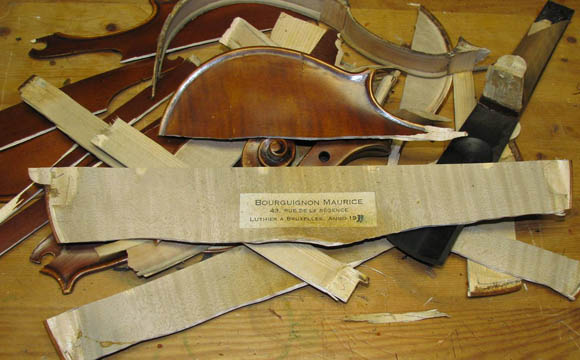When we last left Paypal, the company was busy destroying Christmas for a bunch of kids. This week they’re shredding violins into bits while taking money from unsuspecting sellers. When will we stop trusting these guys? When they kill a puppy?
Regretsy reader Erica sold an ostensibly rare violin to an eBay buyer who paid using Paypal. The buyer disputed the authenticity of the instrument and asked for his money back. Rather than handle it amicably with Erica, the buyer went to Paypal who advised them to supply proof that the item had been destroyed and they would refund the money. The buyer then shredded the violin into chowder and sent a handsome photo to Paypal and Erica. Paypal refunded the money.
This left Erica in a tight spot. She no longer had the money and the item she was attempting to sell was shredded. Actually, that’s the end of the story: violin shredded, money taken away. It is, in a word, heartbreaking.
Now a lot of this story isn’t out yet and I have a line in to Paypal about this, so before we get out the pitchforks lets discuss what happened. Paypal has a well-documented policy that it does not allow the sale of fakes through its service. This applies, presumably, to Mucci purses and Drada wallets and fake Bolex watches. However, no one in this situation was in any position to objectively appraise this piece and Paypal could not confirm or deny the accuracy of the buyer’s claims. To reduce this argument ad absurdum, what if this was a painting or sculpture attributed to Raphael and was really made by Michelangelo? In any case it’s real and Paypal’s CSRs have no business passing judgement on these things, let alone take the buyer at his word. Paypal, in their zeal to perform customer server theatre, is judge, jury, and proxy executioner here.
Erica might be a total faker. The buyer may be in the right. But it’s not Paypal’s job to appraise violins. My understanding is that Paypal is a proxy between two parties and a better solution would be to hold the money in escrow – less shipping – so the violin can come back to the owner and the cash then goes to the buyer.
